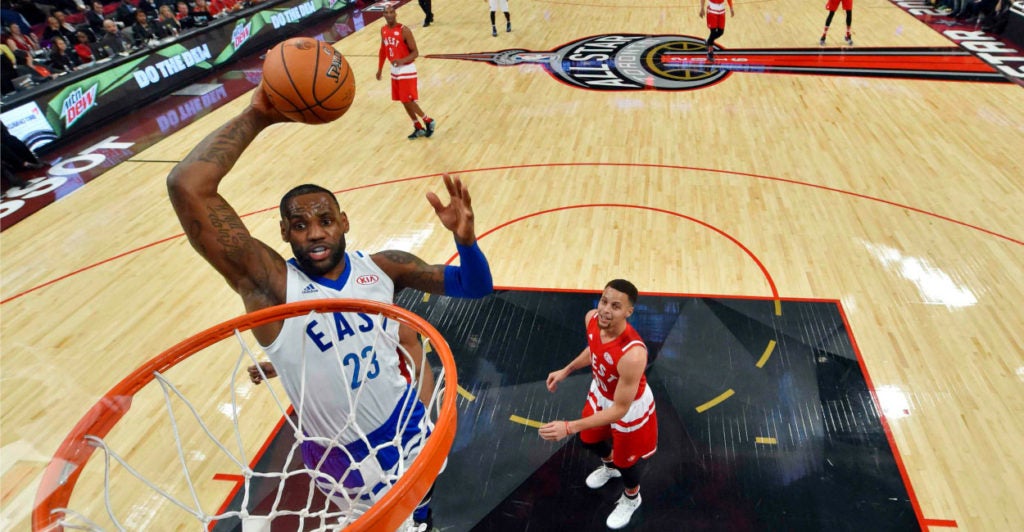How far does the NBA want transgender “rights” to go?
The NBA stepped into the culture war with its recent decision to move the 2017 All-Star Game out of Charlotte, North Carolina, citing “the climate created by HB2,” the bill that requires government single-sex bathrooms be available only to people on basis of the sex on their birth certificate.
When it decided to move the game out of Charlotte, the NBA released a statement:
Our week-long schedule of All-Star events and activities is intended to be a global celebration of basketball, our league, and the values for which we stand, and to bring together all members of the NBA community—current and former players, league and team officials, business partners, and fans. While we recognize that the NBA cannot choose the law in every city, state, and country in which we do business, we do not believe we can successfully host our All-Star festivities in Charlotte in the climate created by HB2.
As a woman, I appreciate a different kind of “climate”—one where I can feel safe going to intimate facilities full of strangers. I think that the basis for who gets to use these facilities should be one’s biological sex. The NBA seems to disagree with this commonsense notion, instead believing that bathroom, shower, and locker access should be determined on the basis of subjective gender identity.
But bathrooms and locker rooms aren’t the only area where transgender activists could demand changes.
In fact, sports itself—not just the bathrooms used by its fans—could be affected.
Would the NBA’s sister organization, the WNBA, be willing to let any current NBA player who decides to identify as a female compete on a woman’s team?
Of course, allowing biological men into the WNBA could be unfair to current WNBA players and the many women and girls who aspire to a career in basketball. After all, the average male in his 20s outjumps 95 percent of all women of the same age, and only a handful of WNBA players can dunk. But if the NBA believes preferred gender identity, not biological sex, is what matters, it naturally follows that men who now identify as women, perhaps without even having any medical treatment, should play in the WNBA, not NBA.
Such a scenario may seem far-fetched, but the existence of separate men’s and women’s teams in sports is something that may soon be changing at the grade school and high school levels.
The Obama administration’s transgender guidance could require sports teams to be open to all based on gender identity, not on biological realities. My colleague Ryan T. Anderson writes that the guidance is unclear on what it requires of schools when faced with the issue of transgender students and their placement on sports teams:
When it comes to athletics, the Obama directives are confusingly vague, telling schools that they may not ‘rely on overly broad generalizations or stereotypes about the differences between transgender students and other students of the same sex (i.e., the same gender identity) or others’ discomfort with transgender students.’ So which team a transgender student athlete must be allowed to play on is unclear.
In Alaska, high school girls have already lost medals in track competitions because of their inability to compete with a male who identifies as a girl. In a video put out by the “Ask Me First” campaign run by the Family Policy Alliance, one of the girls who raced against this athlete speaks out about the unfair aspects of allowing biological males to compete in races against girls:
There was obviously one girl in each of those races who did not get to compete because of this athlete. It’s not fair scientifically—obviously male and female are made differently. There are certain races for males, and certain races for females, and I believe it should stay that way.
Subjectively identifying as a girl did not make this boy any slower on the track, just as subjectively identifying as a short person would not have changed the fact that he was clearly the tallest person in the race.
If all women’s sports are opened to those who identify as women, regardless of genetics, biology, muscle mass, physiology, hormones, and bone structure—in other words, regardless of sex—we’ll begin seeing many more girls and women who won’t be able to compete because of physical differences between men and women. This just isn’t fair to women athletes and would reverse the long fought battles to end discrimination against women and girls in sports.
The NBA’s decision to move the All-Star Game from Charlotte is an unnecessary use of cultural cronyism to promote a political ideology currently in vogue. And the ideology it is promoting may eventually lead to the demise of women’s sports as a unique venue where women can compete and win fairly.
